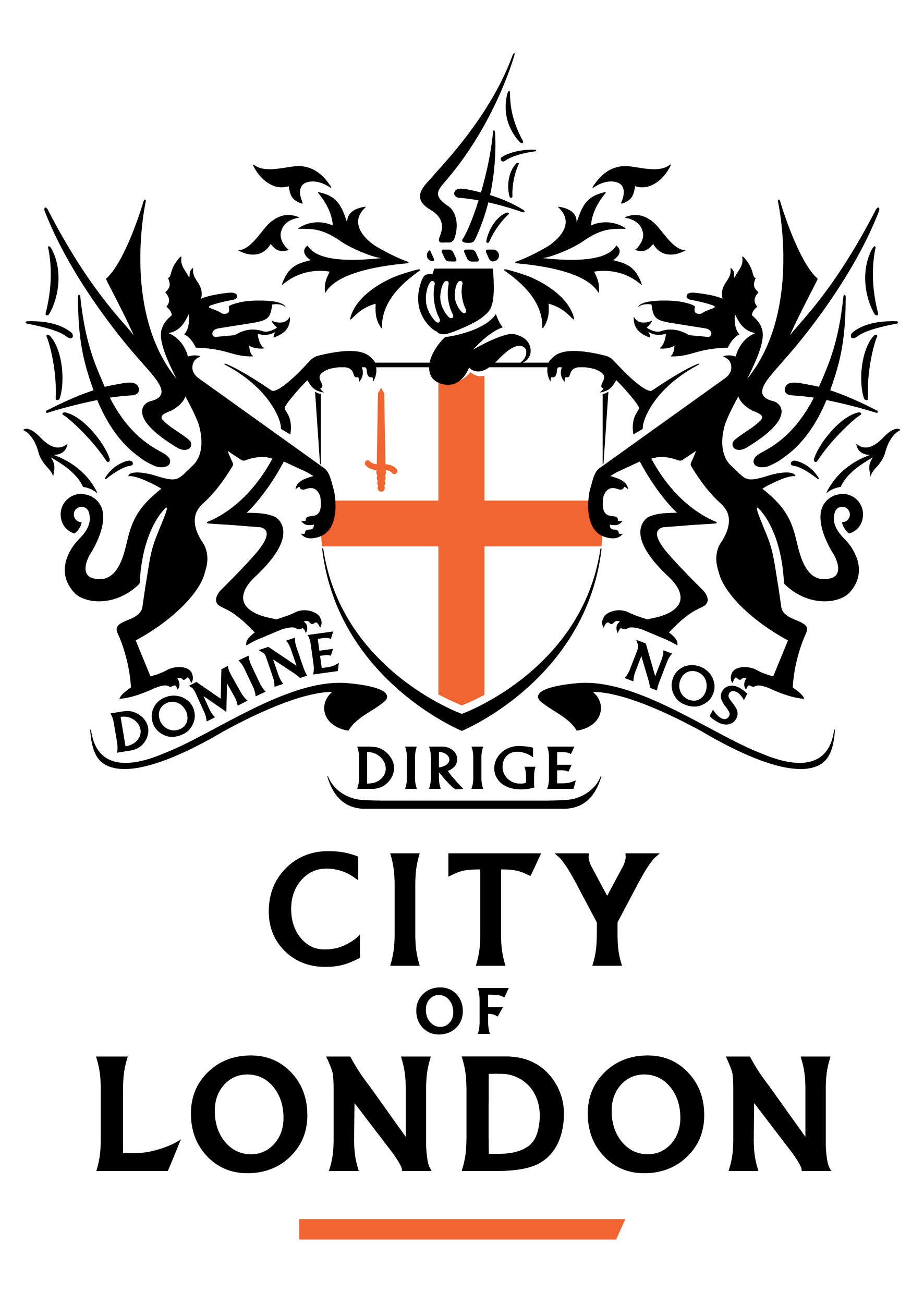
- You are here:
- Agenda item
- Anthony David Fitzpatrick
- Your Councillors
Your Councillors
The City of London is divided into 25 wards. Each ward elects one Alderman and two or more Common Councillors (collectively referred to as Members, equivalent to councillors), dependent on its population. There are currently 100 Common Councillors and 25 Aldermen serving as elected representatives, representing public interest and informing how the City of London Corporation should carry out its various activities.
Common Councillors are elected every four years to serve on the City Corporation’s committees. The next Ward elections are due to take place in March 2025. Between two and ten councillors are elected to represent each of the City Corporation’s 25 Wards, dependent on the size of the electorate. They work alongside the Aldermen, of which there are 25 (one per Ward), to oversee the work of the City Corporation and the delivery of a diverse range of services to residents, City workers and visitors.
Aldermen have jurisdiction over their Wards and for centuries each Ward has elected one Alderman. Whilst full City-wide elections are held every four years for Common Councillors, the Aldermen are elected as and when their individual six yearly terms of office expire. The Aldermen are members of the Court of Aldermen, from which future Sheriffs and Lord Mayors of the City of London are selected. Whilst the Court of Aldermen is focused on progression to and support for the Mayoralty, they also oversee the creation of new Livery Companies and Guilds and maintain a historic link to the Livery. They also serve on Common Council committees, act as governors and trustees of a variety of schools, hospitals, charitable foundations and trusts with ancient City connections. Aldermen are elected for six years from their date of election, so there is no single date on which they are elected.
The work of the City Corporation is overseen by the Court of Common Council (comprising of Common Councillors and Aldermen) and certain key decisions are taken by that body. The majority of the City Corporation’s work is, however, carried out through various committees which are established by the Court. Each councillor has an opportunity to serve on a number of committees made up of representatives from each of the various 25 wards. These are known as Ward Committees and they have broad responsibilities, including oversight of the City Corporation’s finances, planning & transportation, community & children’s services, port health & environmental services; and culture, heritage and libraries responsibilities. The councillors from each individual Ward agree among themselves who will serve on these committees but there are also opportunities to be elected to them. In addition, there are also a number of committees that are elected by the Court. The work of these committees is wide-ranging and includes, for example, the City Corporation’s police authority work, policy and resources, the running of the Barbican Centre, and the City’s open spaces.
In terms of the political composition of the Court of Common Council, the majority of councillors have not been elected on a party political basis and their political status is therefore listed as Independent. The Chairman of the Policy and Resources Committee is also a senior member of the Court of Common Council and is a member of the Leaders’ Committee of London Councils, which comprises the lead councillors from across the London Boroughs. The main difference from standard local authority governance is that the City Corporation’s decision making is based on a committee structure, rather than a cabinet system whereby the Leader of a Council and Executive Members are the principle decision-makers.
Not all of the councillors in the City of London hold surgeries. For those that do not, they are contactable on a more ad hoc basis – please use the links below to contact your local councillor. On the committee-related webpages you will see reference to Chairmen, Chairs, Deputy Chairmen and Deputy Chairs. Because Diversity and Inclusion are important to the City Corporation, those Members serving in these positions are given the opportunity to decide how they would like to be addressed.
-

Joanna Tufuo Abeyie MBECornhill
-

George Christopher AbrahamsFarringdon Without
-

John David AbsalomFarringdon Without
-

Munsur AliPortsoken
-

Rehana Banu Ameer, DeputyVintry
-

Randall Keith Anderson, DeputyAldersgate
-

Shahnan BakthBroad Street
-

Jamel BandaCordwainer
-

Brendan BarnsFarringdon Within
-

Alexander Robertson Martin Barr (Alderman)Cordwainer
-

Matthew BellFarringdon Within
-

The Honourable Emily Sophia Wedgwood BennBread Street
-

Nicholas Michael Bensted-Smith JPCheap
-

Ian Bishop-LaggettBassishaw
-

Christopher Paul Boden, DeputyCandlewick
-

Keith David Forbes Bottomley, DeputyBridge and Bridge Without
-

Sir Charles Edward Beck Bowman (Alderman)Lime Street
-

Tijs BroekeCheap
-

Timothy Richard Butcher, DeputyLangbourn
-

Michael John Cassidy CBEColeman Street
-

Dominic Gerard ChristianLime Street
-

Henry Nicholas Almroth Colthurst, DeputyLime Street
-

Anne CorbettCripplegate
Labour
-

Aaron Anthony Jose Hasan D'SouzaTower
-

Simon Duckworth, Deputy OBE DLBishopsgate
-

Chief Commoner Peter Gerard Dunphy, DeputyCornhill
-

Mary Durcan JPCastle Baynard
-

Professor Emma Edhem (Alderman)Candlewick
-

John Ernest Edwards, DeputyFarringdon Within
-

Sir Peter Estlin (Alderman)Coleman Street
Alderman
-

Helen Lesley Fentimen OBE JPAldersgate
Labour
-

Sophie Anne FernandesColeman Street
-

Anthony David FitzpatrickLime Street
-

John William Fletcher, DeputyPortsoken
-

John FoleyFarringdon Within
-

Dawn FramptonCripplegate
-

Marianne Bernadette Fredericks, DeputyTower
-

Steve Goodman OBEAldersgate
Labour
-

Alison Gowman CBE (Alderman)Dowgate
Alderman
-

Prem Goyal OBE (Alderman)Portsoken
Alderman
-

Martha Grekos (Alderwoman)Castle Baynard
-

John GriffithsCastle Baynard
-

Jason GrovesTower
-

Madush Gupta, DeputyBassishaw
-

Timothy Russell Hailes (Alderman)Bassishaw
Alderman
-

Caroline Wilma HainesQueenhithe
-

Christopher Michael Hayward, DeputyBroad Street
-

Jaspreet HodgsonVintry
-

Ann Holmes, DeputyFarringdon Within
-

Amy HorscroftCordwainer
-

Robert Picton Seymour Howard (Alderman)Cornhill
-

Michael HudsonCastle Baynard
-

Robert Charles Hughes-Penney (Alderman)Cheap
Alderman
-

Wendy HydeBishopsgate
-

Gregory Jones KC (Alderman)Farringdon Without
-

Henry Llewellyn Michael Jones MBEPortsoken
-

Shravan Jashvantrai Joshi, Deputy MBEBishopsgate
-

Vincent Keaveny CBE (Alderman)Farringdon Within
Alderman
-

Florence Keelson-AnfuFarringdon Within
-

Alastair John Naisbitt King DL (Alderman)Queenhithe
Alderman
-

Elizabeth Anne King, BEM JP (Alderwoman)Cripplegate
-

Dame Susan Langley, DBE (Alderwoman & Sheriff)Aldgate
Alderwoman and Sheriff
-

Gregory Alfred LawrenceFarringdon Without
-

Frances LeachCripplegate
Labour
-

Tim Levene (Alderman)Bridge and Bridge Without
Alderman
-

Natasha Maria Cabrera Lloyd-Owen, DeputyCripplegate
Labour
-

Charles Edward Lord, OBE JP, DeputyFarringdon Without
-

Sir Nicholas Stephen Leland Lyons (Alderman)Tower
-

The Rt Hon. The Lord Mayor, Alderman Professor Michael Raymond Mainelli (Alderman)Broad Street
Alderman
-

Christopher Makin (Alderman)Aldersgate
Alderman
-

Antony Geoffrey ManchesterBroad Street
-

Paul Nicholas Martinelli, DeputyFarringdon Without
-

Bronek Masojada (Alderman & Sheriff)Billingsgate
Alderman and Sheriff
-

Andrew Paul MayerBishopsgate
-

Catherine McGuinness CBECastle Baynard
-

Andrew Stratton McMurtrie JPColeman Street
-

Timothy James McNallyAldgate
-

Wendy Mead OBEFarringdon Without
-

Andrien Gereith Dominic Meyers, DeputyAldgate
-

Brian Desmond Francis Mooney, Deputy BEMQueenhithe
-

Alastair Michael Moss, DeputyCheap
-

Eamonn James MullallyFarringdon Within
-

Benjamin Daniel MurphyBishopsgate
-

Jennette Rachel Newman (Alderwoman)Walbrook
Alderwoman
-

Deborah Oliver TDAldersgate
-

Suzanne Ornsby KCFarringdon Without
-

Graham PackhamCastle Baynard
-

Sir Andrew Charles Parmley, (Alderman)Vintry
-

Judith PleasanceLangbourn
-

James Henry George Pollard, DeputyDowgate
-

Henrika Johanna Sofia PriestCastle Baynard
-

Jason Paul PritchardPortsoken
-

Simon Pryke (Alderman)Langbourn
-

Nighat Qureishi, DeputyBillingsgate
-

Alpa Raja, DeputyCastle Baynard
-

Anett RidegAldersgate
-

Sir William Anthony Bowater Russell (Alderman)Bread Street
Alderman
-

David SalesAldgate
-

Ruby SayedFarringdon Without
-

Ian Christopher Norman Seaton MBECornhill
-

Hugh SelkaBridge and Bridge Without
-

Oliver Sells KCFarringdon Without
-

Dr Giles Robert Evelyn Shilson, DeputyBread Street
-

Alethea SilkWalbrook
-

Paul SinghCripplegate
-

Tom SleighBishopsgate
-

Sir Michael Snyder, DeputyCordwainer
-

Naresh Hari SonparAldersgate
-

James St John DavisCandlewick
-

Mandeep ThandiAldgate
-

James Michael Douglas Thomson, DeputyWalbrook
-

Luis Felipe TilleriaBillingsgate
-

James Richard TumbridgeTower
-

Shailendra Kumar Kantilal UmradiaAldgate
-

William Upton KCFarringdon Without
-

Jacqueline Roberts WebsterCripplegate
Labour
-

Mark Raymond Peter Henry Delano WheatleyDowgate
-

Ceri Wilkins, DeputyCripplegate
-

David Williams -

Glen David WitneyCastle Baynard
-

Philip WoodhouseLangbourn
-

Dawn Linsey Wright, DeputyColeman Street
-

Irem YerdelenLime Street
-

Kawsar Zaman (Alderman)Bishopsgate